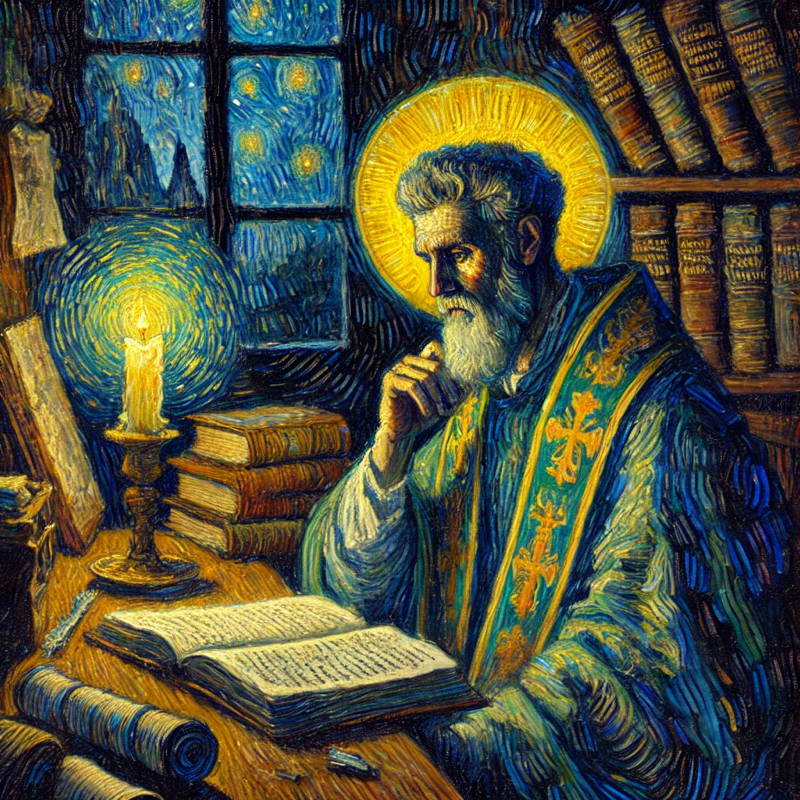St. Augustine of Hippo: A Reflection on Shame, Stigma, and Redemption
St. Augustine of Hippo’s journey from a life of indulgence to sainthood was marked by deep shame and societal stigma. His struggles with desire and identity shaped his profound writings on grace and redemption. His story teaches us about resilience, transformation, and self-acceptance.

Introduction
St. Augustine of Hippo is one of the most influential Christian thinkers in history. His theological insights shaped Western Christianity, and his philosophical writings continue to be studied today. Yet, before he became a revered bishop and saint, Augustine lived a life marked by personal turmoil, indulgence, and profound shame. His early years were filled with pursuits that later became sources of regret, leading him to wrestle with the stigma attached to his past. This journey—from a youth caught in worldly desires to a man of deep faith and conviction—offers a powerful reflection on how shame and stigma can shape, but not define, a person’s destiny.
The Burden of Stigma and Shame
Augustine's early life was characterized by intense intellectual curiosity and an insatiable hunger for pleasure. Born in 354 CE in Roman North Africa, he was raised by a devout Christian mother, Monica, and a pagan father, Patricius. Despite his mother's guidance, Augustine rejected Christianity in his youth, immersing himself in rhetoric, philosophy, and hedonistic pleasures.
He openly engaged in a long-term relationship with a woman outside of marriage, fathering a son named Adeodatus. In Roman society, where marriage and social propriety were highly regarded, this relationship was a source of public and personal scandal. Even as he excelled academically and socially, he carried the weight of this stigma—his status as an unwed father and his rejection of societal expectations cast a shadow over his achievements.
Moreover, Augustine's involvement with the Manichaean sect, a religious movement that blended elements of Christianity, Zoroastrianism, and Gnostic thought, further marginalized him. To many Christians of the time, Manichaeism was considered heretical, and his association with it distanced him from the faith his mother so dearly held. This ideological rebellion intensified the shame he would later express in his Confessions.
How He Handled It
Augustine’s transformation was not instantaneous, nor was it without deep personal struggle. He spent years grappling with his desires, intellectual doubts, and the shame of his past actions. His own words in Confessions reveal a man tormented by his dual nature—one part drawn to worldly pleasures, the other longing for divine truth.
His pivotal moment came in 386 CE while he was in Milan. Influenced by the sermons of Bishop Ambrose and the prayers of his mother, Augustine experienced an intense spiritual crisis. He famously described hearing a child’s voice chanting “Take and read” (tolle lege), which led him to open the Bible to Romans 13:13-14, a passage urging believers to abandon indulgence and embrace Christ. This moment became the turning point of his life.
He chose to renounce his former way of living, leaving behind his career in rhetoric, his unwed partner, and his previous ideological affiliations. He dedicated himself fully to Christian teachings, was baptized in 387 CE, and later became a priest and bishop. Yet, his past did not simply vanish—he instead transformed his experiences into a source of wisdom. His writings did not erase his former self but rather embraced it as part of a journey toward redemption.
Lessons We Can Learn
1. Shame Can Be a Catalyst for Change
Augustine did not suppress his past but used it as a foundation for personal and spiritual growth. His journey teaches us that acknowledging our mistakes can lead to deeper self-awareness and transformation.
2. Stigma Does Not Define a Person
Though society judged Augustine for his youthful indulgences and unorthodox beliefs, he refused to let stigma dictate his future. Instead, he took control of his narrative, showing that redemption is possible for anyone willing to seek it.
3. The Role of Intellectual and Spiritual Inquiry
Augustine’s life demonstrates the power of questioning, learning, and evolving. His path was not one of blind faith but of rigorous intellectual pursuit, proving that faith and reason can coexist.
4. The Power of Forgiveness—From Oneself and Others
A significant part of overcoming shame is self-forgiveness. Augustine did not merely seek forgiveness from God and society; he learned to forgive himself, which allowed him to move forward with purpose.
5. Transformation Takes Time
Augustine’s conversion was not immediate. It took years of contemplation, mistakes, and guidance from others. His story reminds us that profound change is a journey, not an event.
Conclusion
St. Augustine’s life is a testament to the human capacity for change, growth, and redemption. His early years were marked by desires and choices that brought him shame, but rather than being consumed by it, he used it as a stepping stone toward a more meaningful existence. He confronted the stigma of his past with honesty, transforming his personal struggles into some of the most profound theological and philosophical contributions in history.
In today’s world, where shame and stigma continue to shape people’s lives, Augustine’s story offers hope. It reminds us that our past does not have to dictate our future, and that transformation is possible through reflection, perseverance, and faith. By embracing both our flaws and our potential, we, like Augustine, can move beyond stigma and into a life of purpose and understanding.
